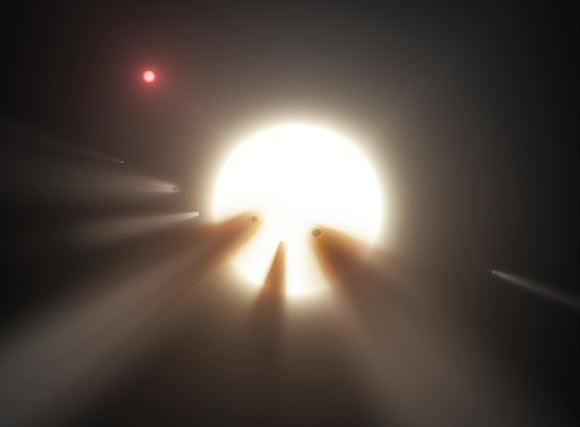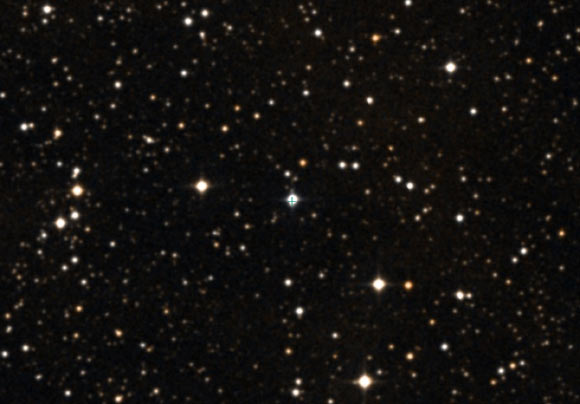New observations of an unusual star called KIC 8462852 by NASA’s Spitzer Space Telescope suggest that its strange light signals are likely from extrasolar comet fragments.
KIC 8462852, also known as TYC 3162-665-1 or 2MASS J20061546+4427248, is a main-sequence star located in the constellation Cygnus, around 1,480 light-years away.
NASA’s Kepler Space Telescope had monitored KIC 8462852 for several years, observing unusual incidents in 2011 and 2013, when the star’s light dimmed in never-before-seen ways. The star had deep dips in brightness – up to 22%. Its brightness also changed irregularly, sometimes for days and even months at a time.
Something had passed in front of KIC 8462852 and blocked its light, but what?
Was it a Dyson sphere built by an advanced alien civilization to collect the star’s energy? A collision in KIC 8462852’s asteroid belt? A dusty cloud of rock and debris? A giant impact that disrupted a nearby exoplanet? Or was it a family of exocomets breaking apart?
In September 2015, Dr Tabetha Boyajian of Yale University and co-authors suggested a family of comets as the most likely explanation.
A new study using data from NASA’s Spitzer Space Telescope addresses the mystery of KIC 8462852, finding more evidence for the scenario involving a swarm of extrasolar comets.
“The scenario in which the dimming in the KIC 8462852 light curve were caused by the destruction of a family of comets remains the preferred explanation,” said Dr Massimo Marengo of Iowa State University, lead author of the study, which was published November 19 in the Astrophysical Journal Letters.
Dr Marengo and his colleagues, Dr Alan Hulsebus of the Harvard-Smithsonian Center for Astrophysics and Dr Sarah Willis of MIT Lincoln Laboratory, studied the star with NASA’s Spitzer infrared data.
The astronomers looked at two different infrared wavelengths: the shorter was consistent with a typical star and the longer showed some infrared emissions, but not enough to reach a detection threshold.
They concluded there were no excess infrared emissions and therefore no sign of an asteroid belt collision, a giant impact on an exoplanet or a dusty cloud of rock and debris.
“So the destruction of a family of comets near the star is the most likely explanation for the mysterious dimming,” Dr Marengo said.
“The comet fragments coming in rapidly at a steep, elliptical orbit could create a big debris cloud that could dim the star. Then the cloud would move off, restoring the star’s brightness and leaving no trace of excess infrared light.”
According to the team, more observations are needed to help settle the case of KIC 8462852.
_____
Massimo Marengo et al. 2015. KIC 8462852: The Infrared Flux. ApJ 814, L15; doi: 10.1088/2041-8205/814/1/L15









